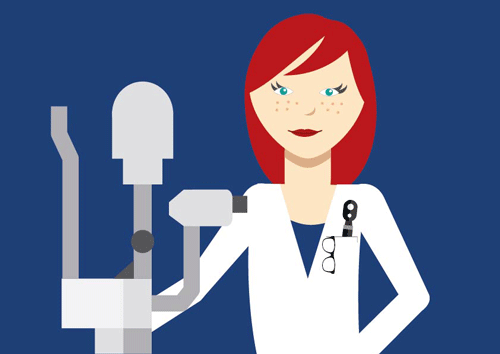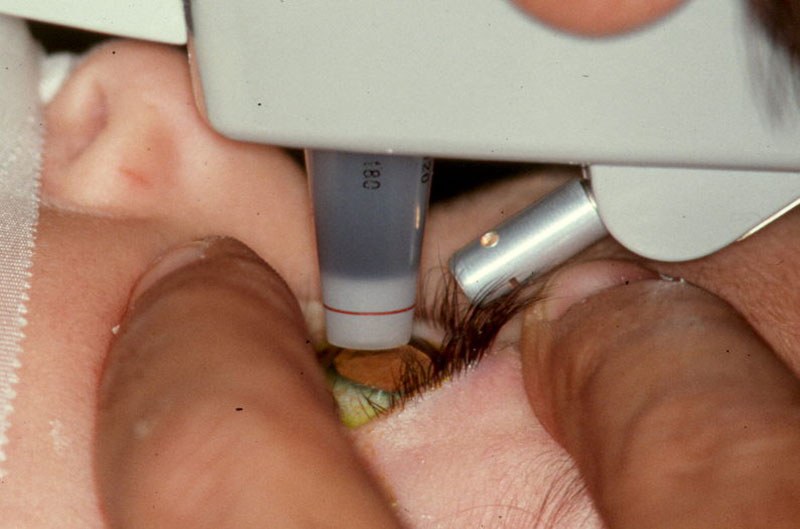Glaucoma may occur in babies due to abnormal development of the internal drainage system of the eye. Its signs and symptoms are usually different than adult glaucoma. Classical cases present with enlarged eyes, with a whitish-bluish cloudy appearance as the cornea becomes edematous due to the high IOP. The baby will present intense photophobia (intolerance to light), blepharospasm (i.e. keep eyes shut when exposed to sunlight), and excessive tearing (which may be present in other abnormalities such as nasolacrimal duct obstruction).
Congenital glaucoma is a sight-threatening disease, and a consultation with a glaucoma specialist should be arranged as soon as possible. Examination under anesthesia is required for appropriate assessment of the condition, and treatment is primarily surgical. Early diagnosis and proper treatment are important for a good visual prognosis.
Long-term follow-up is necessary, when the IOP and optic nerve will be monitored, but also, glasses and eye-patching might be necessary for the development and maintenance of a good vision.





